
It makes sense that Rian Johnson's first movie after Star Wars: The Last Jedi is called Knives Out. After he blew up decades of Star Wars mythology, the fans had their knives out, sharpened and ready to stab at him from any number of directions. Some were angry fanboys, others had nuanced complaints about plot points and pacing, and yet others were just Russian bots. He engaged with his critics more than you'd expect until he did the only sane thing possible in that situation: simply float above it all and move on. Two years later, he's back with a movie about a different hive of scum and villainy: one-percenters fighting over their father's inheritance.
The plot: Harlan Thrombey (Christopher Plummer) - a famous, insanely weathly murder mystery novelist - dies of an apparent suicide. His family, including his daughter (Jamie Lee Curtis), son (Michael Shannon), the wife of his long-dead son (Toni Collette), and their various spouses (Don Johnson, Riki Lindhome) and children (Chris Evans, Jaeden Martell, Katherine Langford), arrive to hear the reading of the will. However, someone amongst them has secretly hired the infamous Detective Benoit Blanc (Daniel Craig) to look into whether foul play was afoot, and the rather eccentric detective immediately recruits Harlan's nurse Marta (Ana de Armas) to play Watson to his Holmes. Everyone is a suspect.
This set-up initially honors, quickly subverts, and eventually reaffirms everything we love about a good Agatha Christie mystery. For example, Blanc, Johnson's answer to Hercule Poirot, is a bit of a ridiculous figure with a Foghorn Leghorn accent, but in the end his methods work. That's just what Rian Johnson does. Whether its Brick, Looper, or Knives Out, he loves to take a sideways approach to a well-known genre, giving us what we want and then something we could never expect, hoping we're cool with that journey.
His own journey with Knives Out started shortly after the release of Last Jedi, but in reality it goes back to one of his earliest childhood memories. He recounted all of this and more in a director diary for Total Film Magazine. Below I've excerpted 9 of the key takeaways from his account of what went into making such a fantastic film:
1. It all goes back to his love for Agatha Christie

"Knives out was inspired by one of my earliest memories, of seeing Agatha Christie novels on my parents' bookshelves. It's kind of a deep, primary memory, because those covers always looked vaguely scary, and that's something that always stuck with me. When I was older, I moved on to the movie adaptations and the ones that I watched the most were those with Peter Ustinov as the detective Hercule Poirot, like the original Death on the Nile, or Evil Under the Sun. Those were on cable TV over and over, in the days when I would just sit and watch cable TV all day. If there's an example of anything that Knives Out most tries to emulate, it's the tone and the feel and the fun of those movies specifically."
2. His unique twist on the whodunit formula was inspired by Alfred Hitchcock

"I love whodunits, but I also do kind of agree with Mr. Alfred Hitchcock, in that all too often a whodunit is just a big build-up to a big surprise at the end. The idea was to figure out how to give the movie an engine that was something beyond just a collection of clues and the mulling-over of suspects, but which still had all the pleasures and the payoffs of what I love about whodunnits. Once I had that, I began to dig a little deeper, and that's when I came up with the actual story."
3. It came together quickly, thanks largely to Daniel Craig
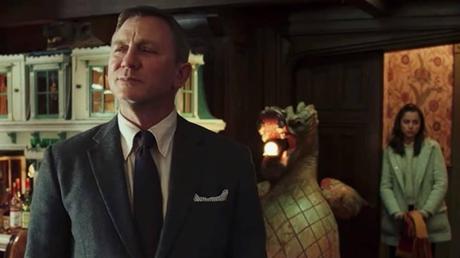
"I started writing in January of 2018, we had a script that was ready to read in June, and we'd wrapped the movie by Christmas. This surprising turn of events was all really triggered by Daniel Craig. I'd had my eyes on him very early on for the part of Benoit Blanc, the detective, but he was busy doing Bond. But then Bond was pushed back, and he had this window. His people said, 'He can do it, but you have to be filming in six weeks.' So we jumped on it, and the rest of the cast came together very quickly."
4. The big starry cast is a direct a tribute to old Agatha Christie movies
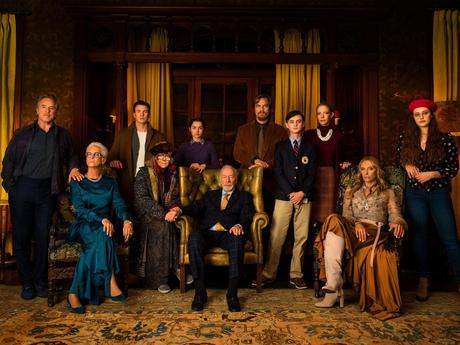
"It was always my intention to have a big, starry cast, and that, again, goes back to those early '80s, late '70s whodunits that I love so much - they were big, all-star spectacles, and for every actor who shows up on screen, there was always that moment of, 'Hey, look who it is!' whether it's Bette Davis, or James Mason, or David Niven. That was always part of the fun of it, for me, if only because the opportunity to work with a crop of actors this big and this talented seemed like an opportunity I couldn't pass up. And getting them was also surprisingly easy - one of the advantages of doing a whodunit is that everybody knows what they're getting into because what's appealing about it was a viewer is also what's appealing to an actor who's reading your script. They get it."
5. Clue is great, but it's not a reference point for this movie
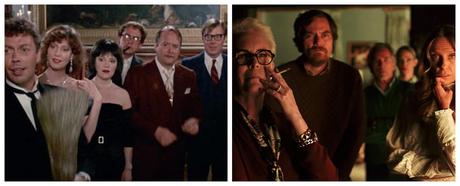
"Fortunately, everyone was happy to hear that we weren't remaking the 1985 Cluedo spoof Clue. I mean, I love that movie, but we were not doing a parody of a whodunnit, we were going to play this straight. These characters are larger than life and they were going to be right on the edge of caricature, but it was important that however big we went with them, they were still grounded, and we were telling a story that was actually a story and not just a payoff."
6. It's political because it has to be to reflect what's going on in the world today
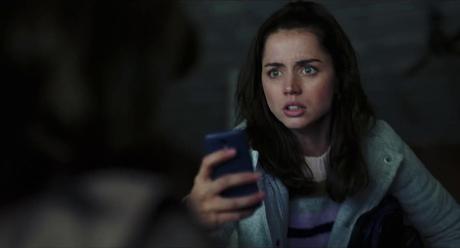
"Agatha Christie was not a political writer. She wasn't a socially active writer, or a social activist writer, at all. Her books are not message-y, and I didn't want this movie to be either. But what they do do is they engage with the culture that they're in. And if you read her books, all of her characters are types from British society at the time that everyone reading her work would have been familiar with, and they would have read the stories and chuckled at them. So, to me, if we were going to take a murder-mystery and set it in America in 2019, it was very important that we didn't just skin it with the modern-day world, but that we did what Agatha Christie did and actually try to use it to engage with some of the character types that we're experiencing today. And so that means if we're telling a story about a family, they're going to be arguing about the kind of stuff that we're all arguing about with our families when we go home, and that's going to have a political element. And, as an immigrant, Marta plays an integral part on several different levels.
7. The biggest challenge? Blocking
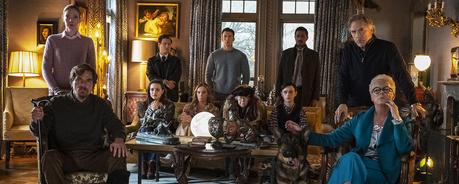
"The biggest challenge for me was trying to block a scene with so many people, figuring out where everybody sits and where to put the camera and how to cover it without spending all day getting close-ups of everybody. But in terms of working with the group, there were none of the usual cliches. Everyone got all along. Everybody was there to play. And when you got them all together in a scene, they just had so much fun, riffing off each other. The most fun days were the ones where we had scenes of the whole family together.
8. Star Wars is fun, but so is a murder mystery with juicy dialogue
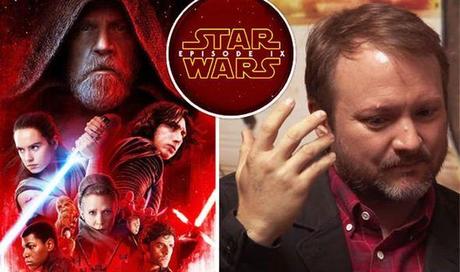
"The funny thing is, it's not like I was thirsting for something I didn't get from Star Wars: The Last Jedi. It's not like I was dying to get back to something that was - quote unquote - mine. If anything, the fun of this was writing large amounts of verbose dialogue, which is something you don't do on Star Wars movies. I got to indulge myself on this, and that was fun."
9. He would love to do another Benoit Blanc mystery
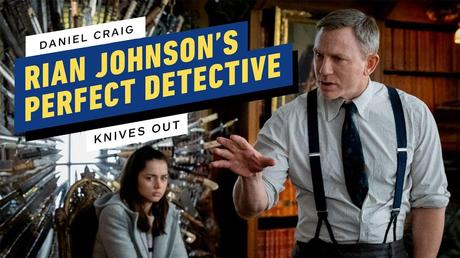
"Obviously, I'm still working with Lucasfilm and talking to them about Star Wars, but I'm also thinking about my own stuff. Until now, I've never thought in terms of sequels to any of the movies I've made, but I had so much fun doing this, and Daniel and I had so much fun working together, that the idea of doing another Benoit Blanc mystery is really appealing to me, in a new location, with a new cast, just treating it like Agatha Christie would treat another book. That would be a blast."
Source: Total Film: November 2019

